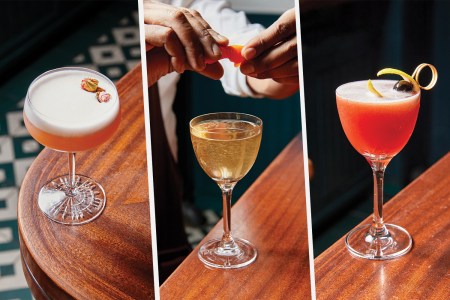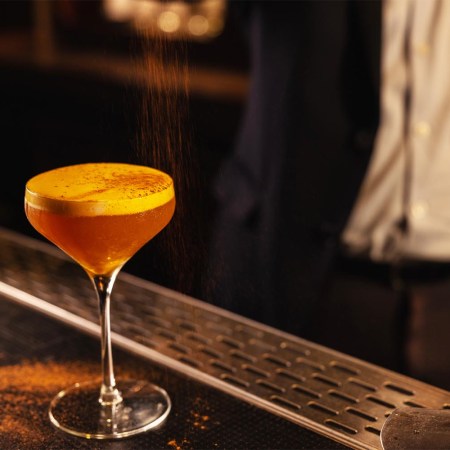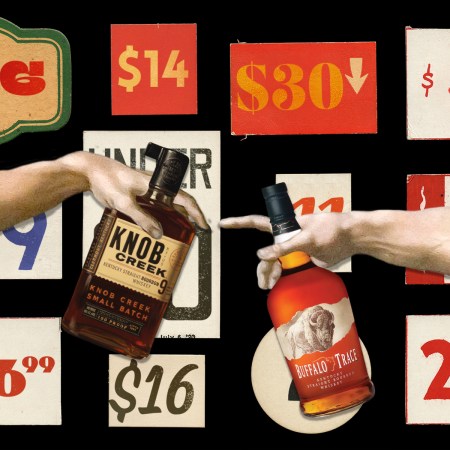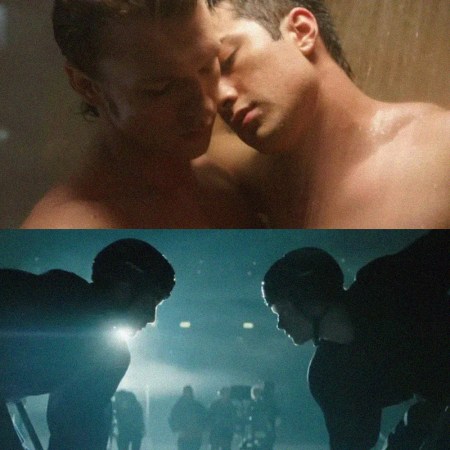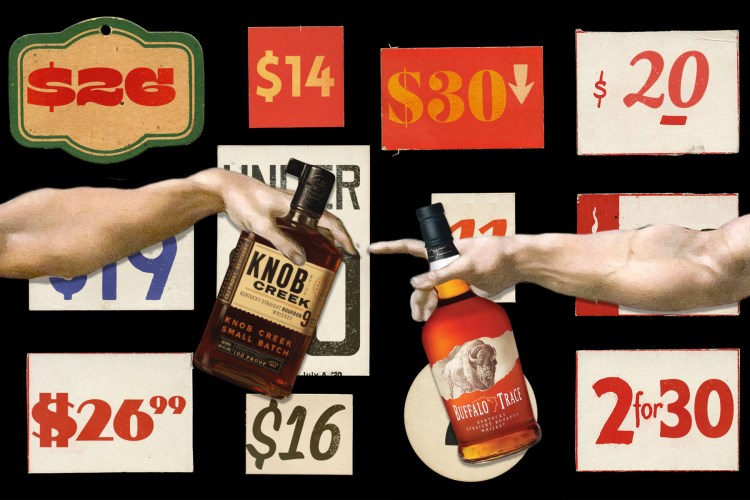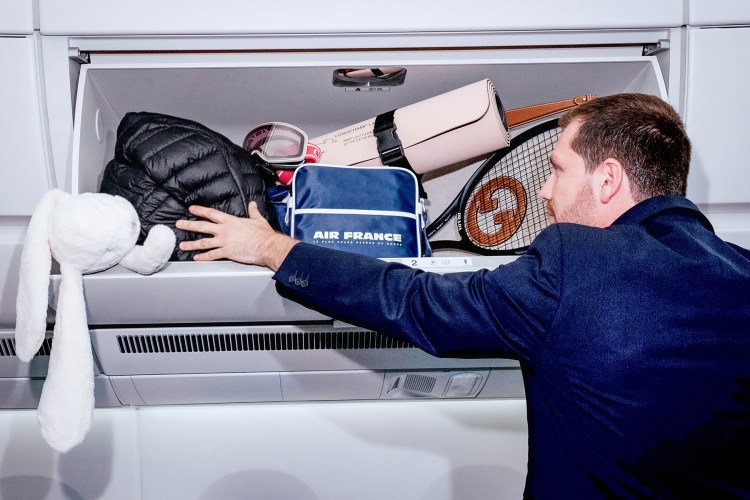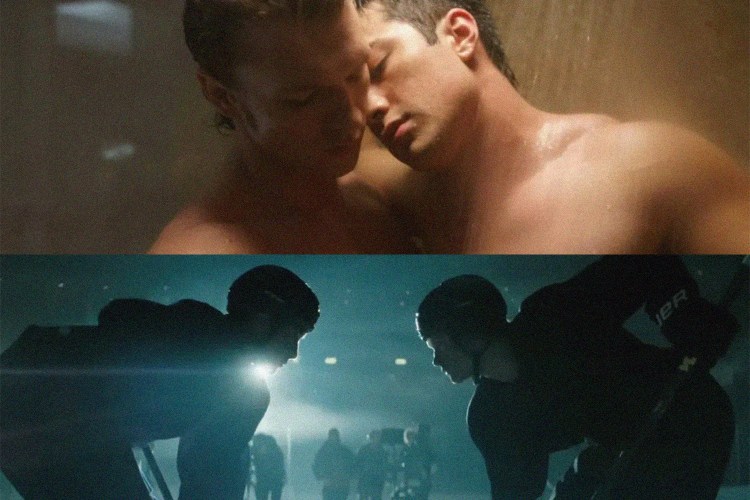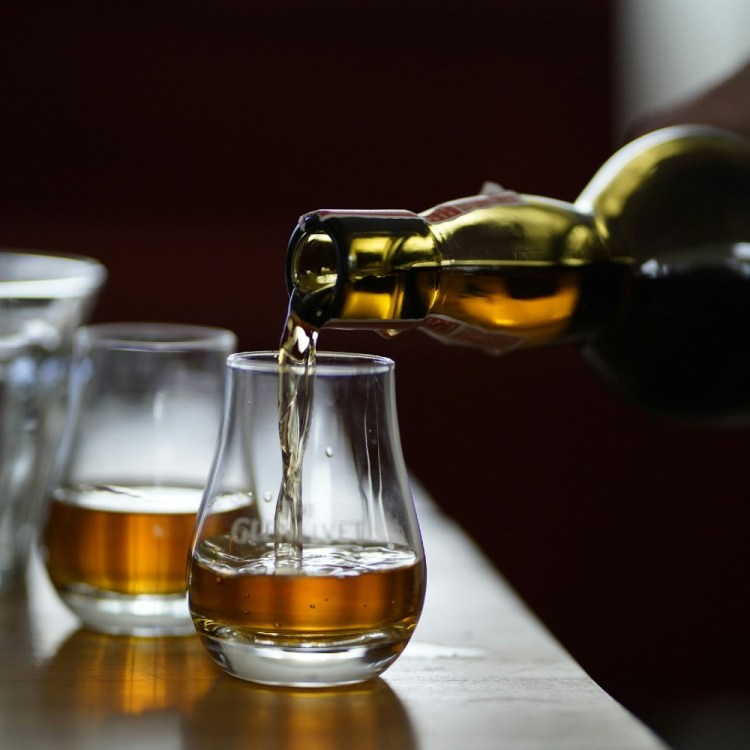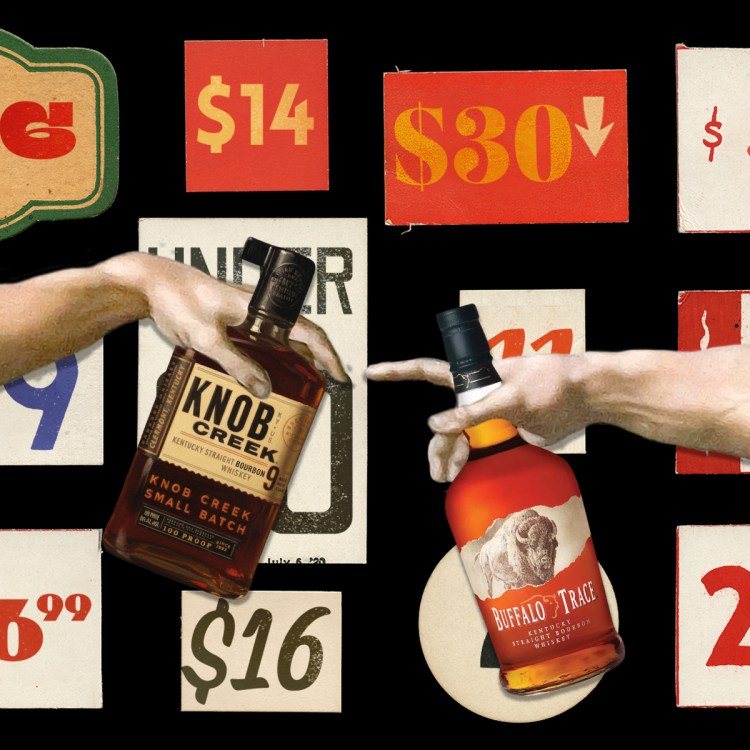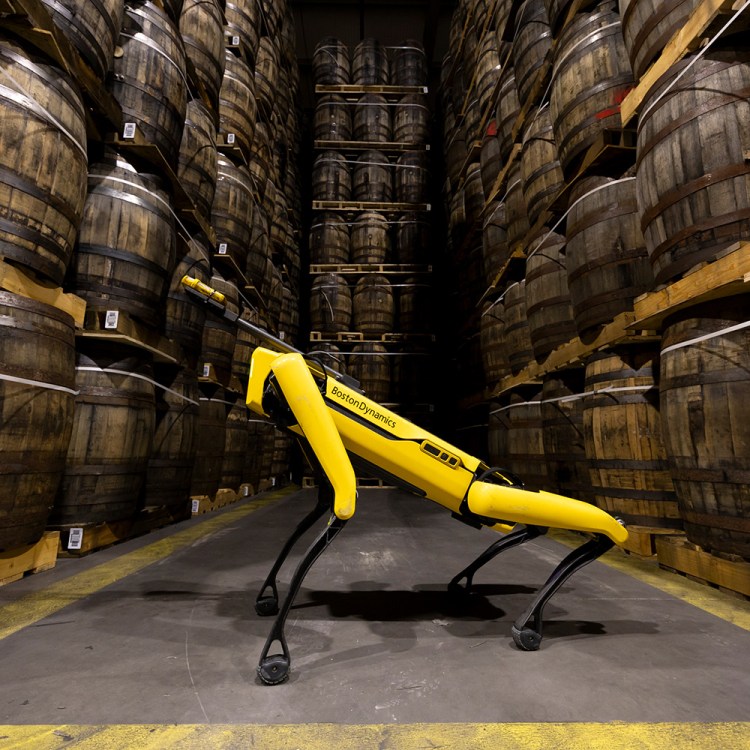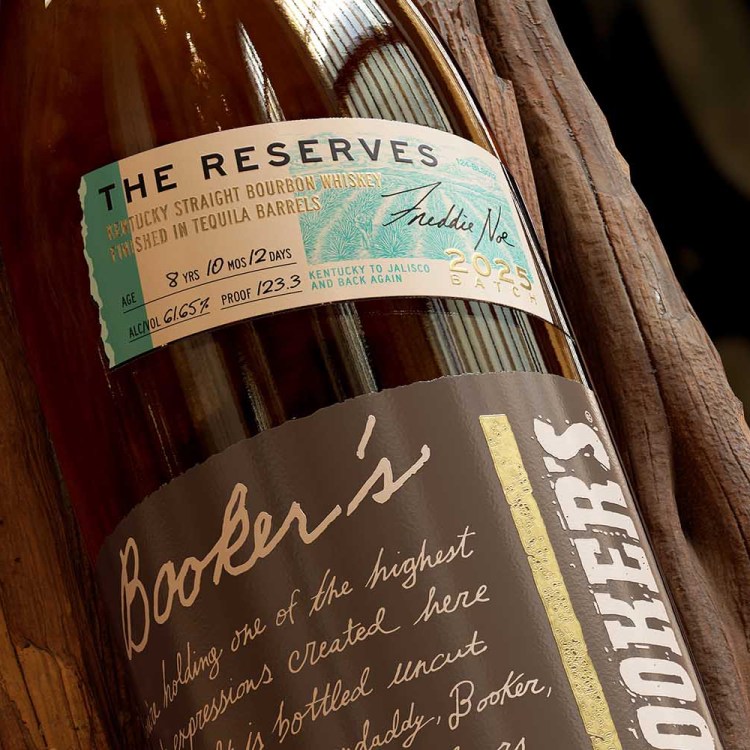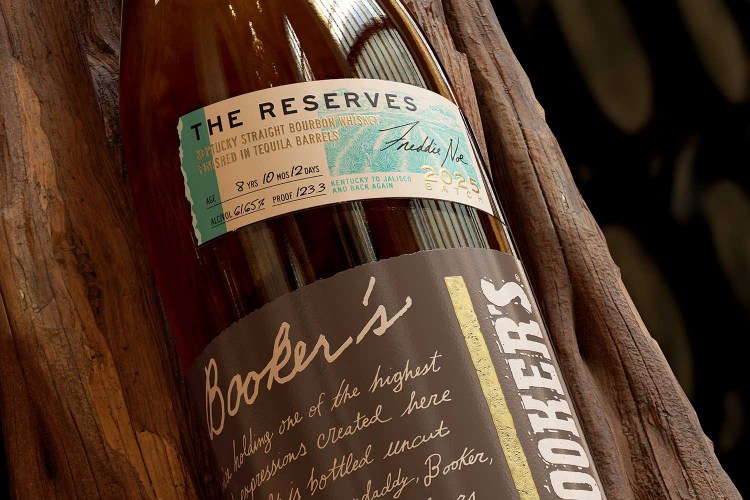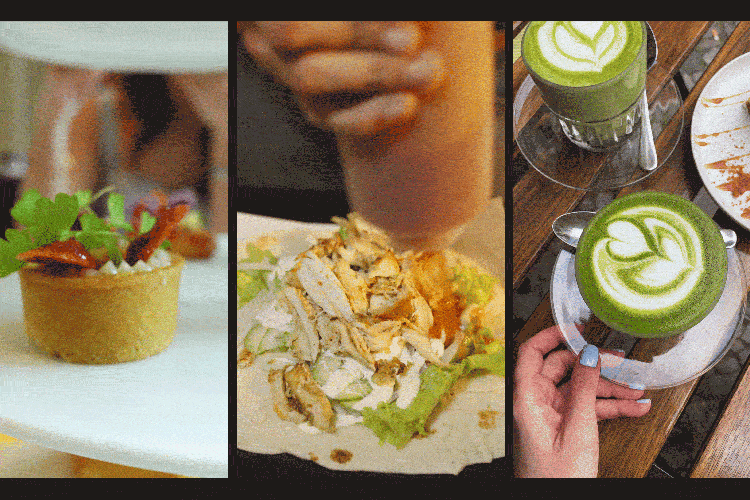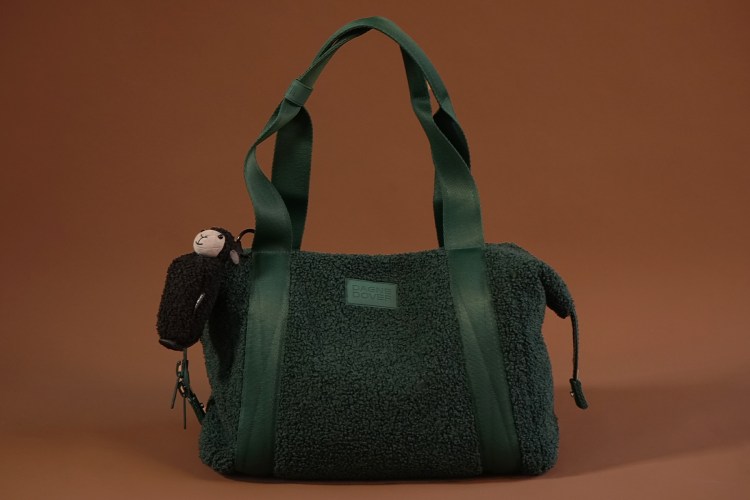In 2012, Chef Dominique Crenn made history by becoming the first female chef in the United States to receive two Michelin stars. She bested that achievement just a few years later by subsequently winning three Michelin stars for her eponymous San Francisco restaurant Atelier Crenn. The coveted recognition, she says, was “a beautiful gift, but never the goal. Storytelling is at the heart of everything I do, whether through food, art or human connection.” So Crenn decided to tell a new story — this time, over a drink.
In 2018, Crenn opened Bar Crenn, a cocktail lounge focused on both classic drinks and new innovations. And while she’s known for making history, Crenn is far from the only Michelin-starred chef to be exploring the world of beverages after achieving one of the highest honors in the hospitality industry. In fact, a growing number of acclaimed chefs are finding their next chapters behind the bar.

“In recent years, the relationship between food and cocktails has evolved into something far more dynamic and intentional,” says Alain Verzeroli, culinary director of Bar Bastion and the broader Bastion Collection, overseeing Le Jardinier and L’Atelier de Joël Robuchon restaurants that boast a combined six Michelin stars. “Consumers today are more knowledgeable than ever about spirits and cocktail culture. They seek out thoughtful, elevated beverage programs with the same discernment they bring to the food.”
In response to this growing demand, chefs and their teams are broadening their horizons — or, in some cases, returning to their roots. For Mike Bagale, executive chef at Sip & Guzzle, the move from Chicago’s three Michelin-starred Alinea to Sip & Guzzle felt almost like a homecoming.
“Bars are the original interface for hospitality, arguably the oldest social platform ever created,” he says. “Long before restaurants, people were gathering in taverns to drink, connect and experience community. That dates back to Mesopotamia, 4,000 BCE. So stepping into this space wasn’t just logical — it felt like returning to the source code.”

That source code, of course, requires many of the same inputs demanded of a Michelin-starred kitchen, including a maniacal focus on the little things. “From how you plate a drink to how you fold a napkin to unfurl perfectly in a guest’s lap, every detail should be considered,” says Will Patton, managing partner at Press Club, who hails from Michelin-starred D.C. restaurants Bresca and Jônt. “For example, at Press Club, the placement of the skewer handle used for the madeleine garnish in our Espresso Martini is positioned specifically so the guest doesn’t have to reach around the glass.”
Chefs are also bringing the same creativity found in their acclaimed dishes to the beverage programs in their respective bars. At True Laurel, the bar opened by chef David Barzelay of two Michelin-starred Lazy Bear in San Francisco, produce-driven cocktails are the star of the show. The ever-changing menu leverages the latest tinctures and brews based on seasonal, local ingredients. For example, guests can order the Blood, Sweat and Cheers, featuring solera rum, sun-dried tomato, blood orange, rose and olive; In The Pines, Under The Palms features toasted coconut rye, St. George Terroir Gin and redwood tips (it’s peak San Francisco).
How Cocktail Programs Have Evolved in American Fine Dining the Last 20 Years
The restaurant Appletini still has its place, but it’s far better nowIndeed, having a background in the kitchen is increasingly helpful in the bar, especially as the appetite for savory and food-inspired cocktails grows, blurring the lines between food and drink. “We’re seeing the use of ingredients like seasonal vegetables, umami broths and herbaceous infusions in beverages, and we’re witnessing the rise of culinary techniques being applied behind the bar, from sous-vide infusions to fat washes and house-fermented elements,” Verzeroli says.
For example, at Bar Crenn, you might find the Haro, a mezcal-based cocktail mixed with saffron, habanero pepper and woody almonds. Or at Press Club, pineapple and plum are smoked before they’re added to a blend of mezcal and tequila for the White Ferrari.
Moving forward, Verzeroli expects many of the same trends found in restaurants to emerge in leading bars as well, with a particular focus on sustainability. “I could see a rise in organic ingredients in cocktails, with consumers seeking drinks made from pesticide-free elements,” he says. “As many spirits are derived from grains, herbs and plants, this trend will lead to a greater emphasis on environmental awareness.”
Of course, whether it’s a focus on sustainability, savory cocktails or the latest fortified sake brand, Barzelay says the best bars and restaurants in the world are all about embracing what makes them unique. “It’s not just the brilliant ideas of the people behind them, but their weird obsessions and idiosyncrasies,” he says.

Ultimately, there’s no real difference between fine dining and an upscale bar when it comes to standards or discipline. “Whether it’s a tasting menu or bar bites, we’re still talking about precision, organization, training, sanitation, cost control and a commitment to quality every single day,” Bagale says.
For the Michelin-starred teams who have taken their restaurant experience into bars, the single biggest takeaway — perhaps surprisingly — is that the kitchen or bar is far from the only or even the most important factor. “People will remember how a meal or a bar made them feel long after they forget what they eat and drink,” Patton says. “This is not to say these are not crucial factors, but hospitality defines everything. Once you dive into restaurant operations, especially Michelin level, you understand that what’s in the glass or on the plate are just facets of the whole.”
As a result, the most enduring commonality amongst these Michelin-level bars is almost comically simple: It’s all about the human experience. “A bartender has the power to shape someone’s entire night through something as small as eye contact, a well-timed smile or an extra moment of generosity with their time,” Barzelay says. “Opening True Laurel has reinforced something fundamental: Hospitality isn’t just about the food or the drinks, it’s about human connection. Whether in a restaurant or a bar, the best hospitality comes from people who bring their passion, personality and generosity to the table, and that’s something I value now more than ever.”
Every Thursday, our resident experts see to it that you’re up to date on the latest from the world of drinks. Trend reports, bottle reviews, cocktail recipes and more. Sign up for THE SPILL now.


